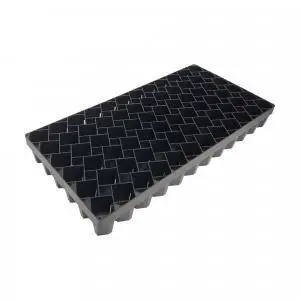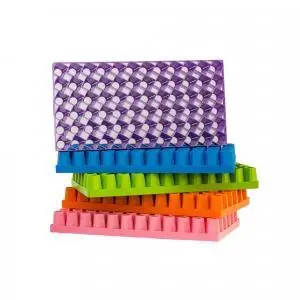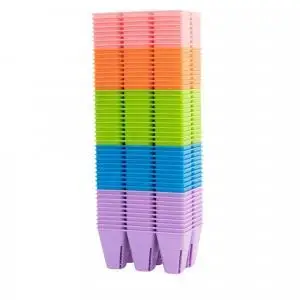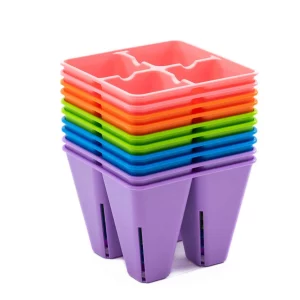
Air Prune Trays and Air Prune Pots by Bootstrap Farmer
Are you ready to take your propagation and seedling development to the next level? Discover the power of air prune trays and air prune pots from Bootstrap Farmer. Our innovative design harnesses the natural process of air pruning roots, leading to healthier, stronger plants from the very start.
Air Pruning Equipment
Bootstrap Farmer Air Prune Propagation Tray – 72 Cell
Bootstrap Farmer Air Prune Propagation Tray – 72 Cell | Colors
Bootstrap Farmer 6 Cell Plug Tray Inserts | Colors
Bootstrap Farmer Air Prune Rainbow Bundle
Bootstrap Farmer 4 Cell Plug Tray Inserts | Colors
$4.00Benefits of Bootstrap Farmer Air Prune Trays & Cell Inserts:
Superior Root Development: Say goodbye to root-bound seedlings! Our air prune pots and trays create ideal conditions for air prune roots, resulting in a vigorous, healthy root system. Learn how to air prune roots effectively and see the difference in your plant growth.
Increased Transplant Success: Stronger roots mean less transplant shock and faster establishment in your garden or containers.
Enhanced Nutrient Uptake: A dense, fibrous root system maximizes nutrient and water absorption, leading to healthier, more productive plants.
Reduced Root Circling: Our design eliminates root circling, preventing stunted growth and ensuring optimal plant health.
Durable and Reusable: Built to last, our trays and inserts are made from high-quality, food-safe plastic, ensuring years of reliable use.
Versatile Options: Choose from our full-size 72 cell air prune trays for larger-scale propagation or our convenient cell inserts (6-cell and 4-cell) for individual seedling development.
What is Air Pruning?
Air pruning is a natural method that stops root circling and promotes a dense, fibrous root system. When a root tip reaches an air pocket (created by the specially designed holes in our trays and inserts), it naturally stops growing at that point. This encourages lateral root growth, leading to a network of robust, branching roots.
Natural Yield is the exclusive distributor for Bootstrap Farmer in Australia.
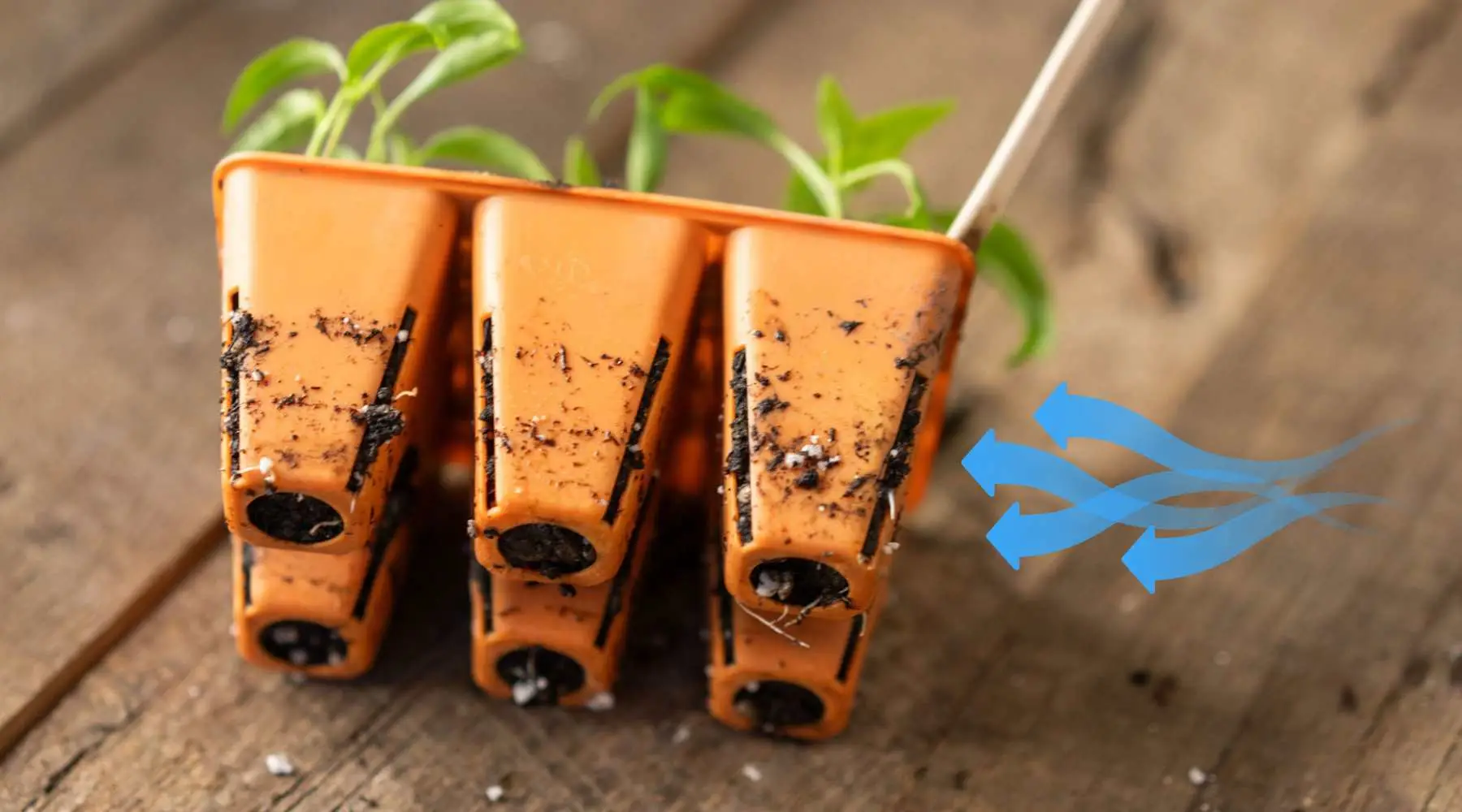
How to air prune?
- Fill your Bootstrap Farmer Air Prune Trays or Cell Inserts with your preferred growing medium.
- Sow your seeds or transplant your seedlings.
- Water regularly, ensuring proper drainage.
- As the roots grow and reach the air holes, they will naturally air prune.
- Enjoy healthy, vigorous seedlings ready for transplanting.
Bootstrap Farmer Cell Inserts: Precision Propagation
6-Cell Inserts: Ideal for starting a large quantity of seedlings in a compact space.
4-Cell Inserts: Perfect for larger seedlings or plants that require more individual space.
Both inserts fit seamlessly into our standard 1020 trays, offering flexibility and convenience. Experience the same air prune roots benefits in a convenient cell format.
Why Choose Bootstrap Farmer?
Bootstrap Farmer are committed to providing high-quality, durable growing supplies for farmers and gardeners of all levels. Bootstrap Farmer products are designed to help you achieve optimal plant growth and maximize your yields.
Bootstrap Farmer and Natural Yield offer exceptional customer service and support.
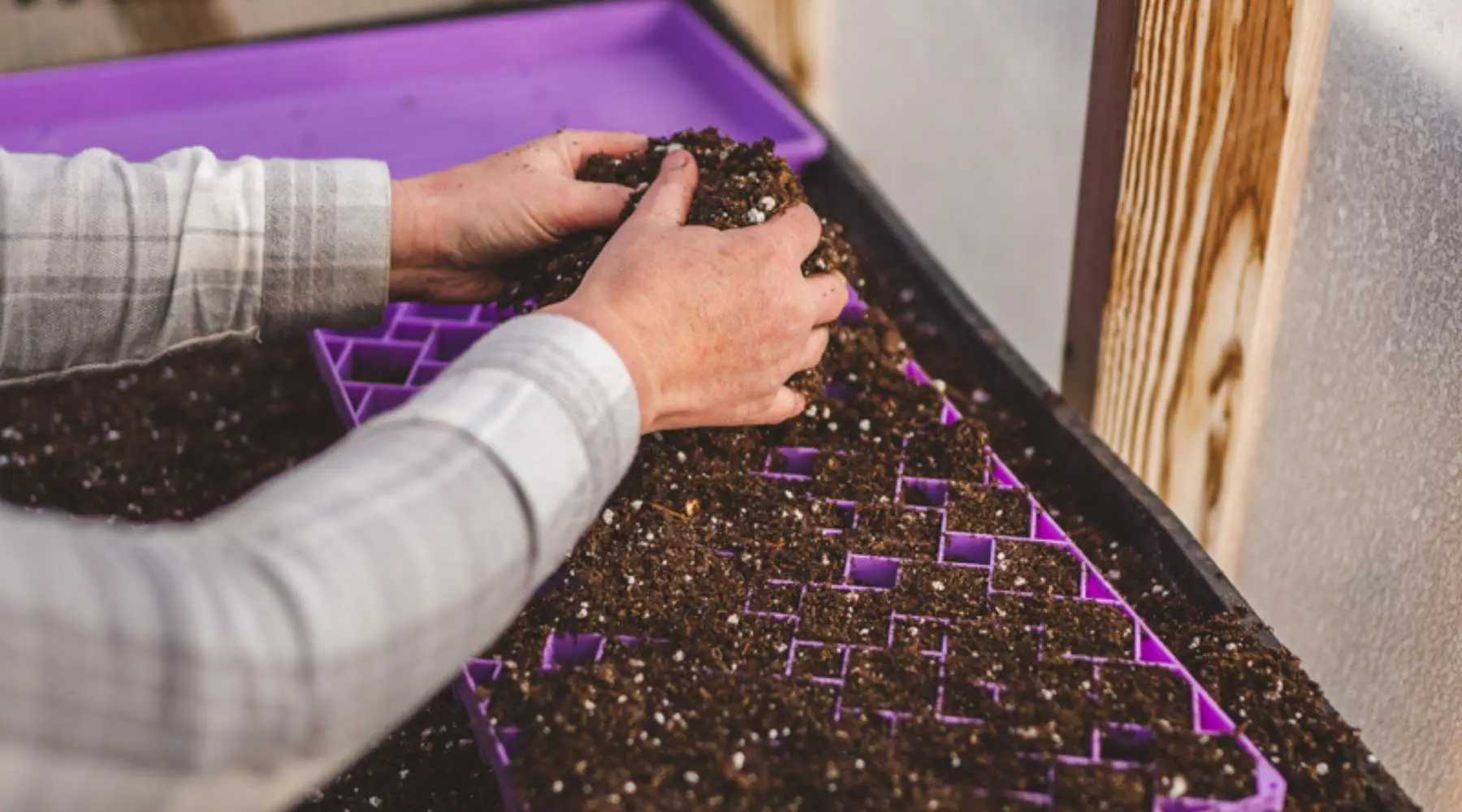
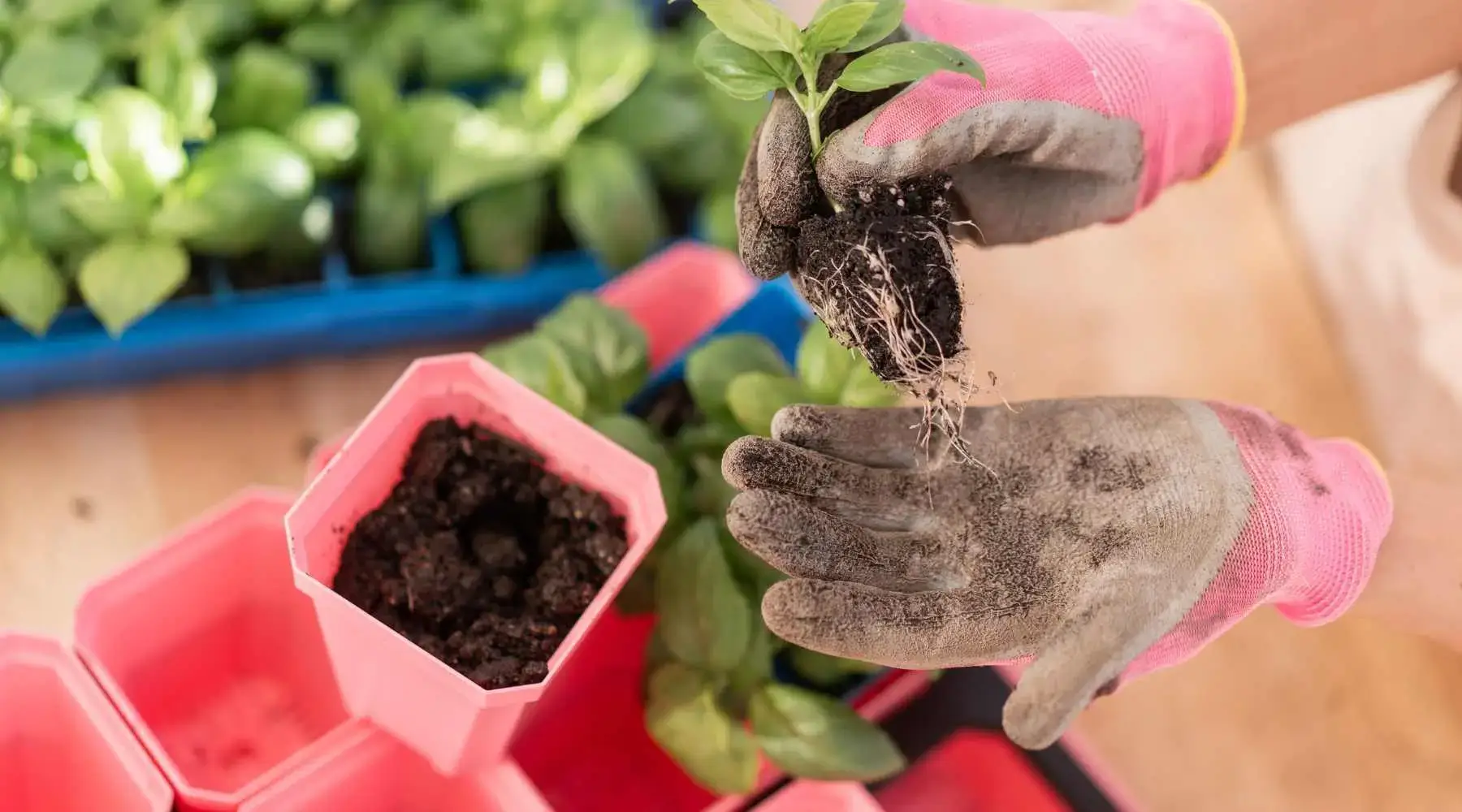
Air Prune Q&A
Air pruning is a natural process that occurs when a plant's roots are exposed to air, causing them to cease growth at the point of exposure. Here's a breakdown of what that means:
Natural Root Response: When a root tip encounters air, especially in an environment with lower humidity, it essentially "dries out" or is "pruned." This triggers the plant to produce new, lateral roots branching out from behind the pruned tip.
Prevents Root Circling: In traditional pots, roots often grow in circles, leading to "root-bound" plants. Air pruning stops this.
Promotes Fibrous Root Growth: It encourages the development of a dense, branching root system, which is more efficient at absorbing water and nutrients.
Healthier Plants: A strong root system leads to healthier, more vigorous plant growth.
How it Works: Specialized containers, like fabric pots or those with air holes, facilitate air exposure to the roots. As roots grow toward the container's edge, they encounter air and are naturally pruned. This constant pruning stimulates the plant to make new root growth. In essence, air pruning is a technique that harnesses a plant's natural response to air exposure to create a healthier, more robust root system.
Air pruning provides several significant benefits to plant growth, primarily by fostering a healthier and more efficient root system. Here's a breakdown of the key advantages:
Prevention of Root Circling (Root-Bound Plants):
In traditional pots, roots often grow in circles, eventually strangling themselves and hindering nutrient and water uptake. Air pruning prevents this by stopping root growth at the edges of the container.
Promotion of Fibrous Root Growth:
Air pruning encourages the development of a dense, branching network of fine roots. These fibrous roots are much more effective at absorbing water and nutrients from the soil.
Enhanced Nutrient and Water Uptake:
The increased surface area of a fibrous root system allows plants to absorb more water and nutrients, leading to healthier and more vigorous growth.
Reduced Transplant Shock:
Plants with well-developed, air-pruned root systems experience less stress when transplanted. The dense root ball holds the soil together, minimizing root damage.
Improved Overall Plant Health:
A strong, healthy root system is the foundation for a healthy plant. Air pruning contributes to increased plant vigor, disease resistance, and overall resilience.
Increased Yields:
For plants that produce fruit or vegetables, a healthier root system often translates to increased yields. In essence, air pruning optimizes root development, leading to stronger, healthier plants that are better equipped to thrive.
When it comes to air pruning, the ideal container facilitates maximum air exposure to the plant's root zone. Here's a breakdown of the most effective types:
1. Fabric Pots (Grow Bags)
Mechanism: These pots are made of porous fabric, allowing air to permeate the sides. As roots reach the fabric, they encounter air and are naturally pruned.
Advantages: Excellent aeration and drainage. Effective prevention of root circling. Lightweight and portable. Durable and reusable.
2. Air-Pruning Pots / Bootstrap Farmer Inserts and Air Prune Trays:
Mechanism: These are specifically designed with holes or slots along the sides to maximize air exposure. Some designs include internal ridges to guide roots towards these air holes.
Advantages: Highly efficient air pruning. Promotes a very dense and fibrous root system. Often designed for easy transplanting. A very well known brand of these types of pots are called "Air-Pots"
Key Considerations:
Drainage: Regardless of the container, proper drainage is vital. Stagnant water hinders air pruning.
Material Quality: Opt for durable materials that can withstand repeated use and environmental conditions.
Size Appropriateness: Select container sizes that align with the plant's growth stage.
Root circling, also known as becoming "root-bound," is a common problem in traditional potted plants. It occurs when roots grow to the edge of a container and, unable to penetrate it, begin to grow in a circular pattern. This can lead to a tangled, constricted root system that hinders the plant's ability to absorb water and nutrients. Air pruning effectively prevents this issue through the following process:
Exposure to Air: Air-pruning containers, such as fabric pots or those with air holes, allow air to reach the root tips. When a root tip grows to the edge of the container and is exposed to air, it naturally dehydrates or "prunes."
Stimulation of Lateral Roots: This pruning action triggers the plant to produce new lateral roots that branch out from behind the pruned tip. Instead of continuing to grow in a circle, the plant focuses on developing a dense, fibrous network of roots.
In essence, air pruning redirects root growth, preventing it from spiraling and promoting a healthier, more branched root structure.
When using air pruning techniques, the growing medium plays a vital role in ensuring proper aeration and drainage. Here's a breakdown of suitable options:
Key Considerations:
Aeration: The medium must allow for ample airflow to the root zone.
Drainage: Excess water should drain freely to prevent root rot.
Moisture Retention: A balance is needed to retain enough moisture for healthy growth without waterlogging.
Suitable Growing Mediums:
Coco Coir: This natural fiber provides excellent aeration and drainage. It retains moisture well and is a popular choice for container gardening.
Perlite: This lightweight volcanic glass greatly improves aeration and drainage. Mixing perlite with other mediums, such as coco coir or potting soil, is highly recommended.
Potting Soil (Well-Draining): A high-quality potting mix designed for containers is suitable. Ensure it's formulated for good drainage and aeration. Adding perlite or other amendments can further enhance its properties.
Soilless Mixes: These mixes, often containing peat moss, perlite, and vermiculite, offer excellent drainage and aeration. They are a popular choice for container gardening and air pruning.
Important Notes:
Perlite Ratio: Increasing the percentage of perlite in your mix enhances aeration. Adjust the ratio based on the plant's needs and the growing environment.
Watering: Air pruning and well-draining mediums can lead to faster drying. Monitor moisture levels and adjust watering accordingly.
In summary, prioritize growing mediums that provide excellent aeration and drainage to maximize the benefits of air pruning.
While air pruning offers significant benefits to a wide range of plants, it's important to understand that its suitability can vary depending on the specific plant species and growing conditions. Here's a breakdown:
Generally Well-Suited Plants:
Plants Grown in Containers: Air pruning is particularly advantageous for container gardening, as it effectively prevents root circling, a common issue in confined spaces.
Vegetables: Many vegetables, such as tomatoes, peppers, and cucumbers, benefit from the enhanced nutrient and water uptake provided by air-pruned roots.
Perennials: Perennial herbs and flowering plants often thrive with air pruning, as it supports long-term root health.
Considerations and Limitations:
Plants that Prefer Consistently Moist Soil: Some plants, such as certain ferns, prefer consistently moist soil conditions. The increased airflow in air-pruning containers can lead to faster drying, which may not be ideal for these species.
Watering Management: Air pruning requires careful watering management, as the increased airflow can cause the growing medium to dry out more quickly.
Key Takeaways:
Air pruning is highly beneficial for most container-grown plants, especially seedlings, young trees, and vegetables. It's essential to consider the specific water requirements of each plant species and adjust watering accordingly. While air pruning is a valuable technique, it's not a one-size-fits-all solution.
In essence, air pruning is a powerful tool for promoting healthy root development, but it's crucial to understand the individual needs of your plants.
Because air pruning inherently increases airflow around the root zone, it significantly impacts how you should water your plants. Here's a breakdown of the key differences:
Increased Drying:
Faster Evaporation: Air-pruning containers, especially fabric pots, allow for much greater air circulation. This leads to increased evaporation of moisture from the growing medium. As a result, the soil or growing mix will dry out more quickly compared to traditional, non-air-pruning pots.
More Frequent Watering: Due to the faster drying rate, you'll generally need to water air-pruned plants more frequently. The exact frequency will depend on factors like:
- The type of growing medium
- The plant species
- The ambient temperature and humidity
- The size of the container.
Key Watering Considerations:
Monitor Moisture Levels: It's crucial to regularly check the moisture level of the growing medium. Use your finger to feel the soil, or consider using a moisture meter.
Thorough Watering: When you do water, water thoroughly until water drains from the bottom of the container. This ensures that the entire root zone is adequately moistened.
Avoid Overwatering: While more frequent watering is necessary, it's still essential to avoid overwatering. Allow the top layer of soil to dry out slightly before watering again. Overwatering can still cause root rot, even with air pruning.
Consider the Growing Medium: The type of growing medium you use will also affect watering frequency. Soilless mixes and those with high perlite content will dry out faster than those with a higher proportion of soil.
Environmental factors: Hot, dry, and windy conditions will increase the rate of evaporation, so more frequent watering will be needed.
In essence, air pruning necessitates a more vigilant approach to watering. You'll need to pay closer attention to moisture levels and be prepared to water more often.
Determining if air pruning is working effectively involves observing both the visible signs of root development and the overall health of the plant. Here's a breakdown of what to look for:
Key Indicators of Successful Air Pruning:
Fibrous Root System: The most prominent sign is the development of a dense, branching network of fine, lateral roots. Instead of a few long, spiraling roots, you'll see a mass of smaller, healthier roots.
Absence of Root Circling: When you remove the plant from its container, the roots should not be tightly wound around the inside. This indicates that the roots are being effectively pruned before they have a chance to circle.
Healthy Root Tips: While some root tips will be pruned, the overall root system should appear healthy and vigorous. Healthy root tips are often white or light-colored.
Vigorous Plant Growth: A healthy root system supports healthy plant growth. Look for signs of increased vigor, such as:
- Stronger stem growth
- Increased leaf production
- Enhanced flowering or fruiting
Reduced Transplant Shock: Plants with air-pruned roots experience less stress when transplanted. The dense root ball helps to hold the soil together, minimizing root damage.
Visual root inspection: If using fabric pots, or air pruning pots with side holes, it is sometimes possible to see the roots growing to the side of the container, and then observe the root tips drying out.
Factors to Consider:
Container Type: The effectiveness of air pruning depends on the type of container used. Fabric pots and specialized air-pruning pots provide optimal air exposure.
Growing Medium: A well-draining growing medium is essential for air pruning. Waterlogged soil will prevent proper air circulation.
Watering Practices: Proper watering is crucial. Air-pruned plants require more frequent watering due to increased evaporation.
By observing these signs, you can determine if your air-pruning techniques are working effectively and ensure that your plants develop healthy, robust root systems.
Humidity plays a crucial role in how effectively air pruning works. Here's how it influences the process:
The Relationship Between Humidity and Air Pruning:
Dry Air is Essential: Air pruning relies on the drying effect of air on root tips. Therefore, lower humidity levels are more conducive to effective air pruning. When root tips are exposed to dry air, they desiccate, prompting the plant to produce lateral roots.
High Humidity Inhibits Air Pruning: Conversely, high humidity levels can prevent root tips from drying out. In a humid environment, the air is saturated with moisture, so root tips may not experience the necessary drying effect. This can reduce the effectiveness of air pruning, potentially leading to less branching and more root circling.
Balancing Humidity and Moisture: While dry air is necessary for air pruning, it's crucial to maintain adequate moisture for the plant's overall health. The growing medium must retain enough moisture to support root growth, even as the root tips are being pruned by dry air. This often means that even with air pruning, that watering must be monitored very closely.
Environmental Control: In controlled environments like greenhouses, humidity levels can be managed to optimize air pruning. Proper ventilation and air circulation are essential for reducing humidity and promoting effective air pruning.
In summary: Lower humidity enhances air pruning by promoting the drying of root tips. High humidity diminishes air pruning by preventing root tips from desiccating. Maintaining a balance between humidity and moisture is crucial for healthy plant growth.
Therefore, when engaging in air pruning techniques, it is very important to monitor the surrounding humidity levels, and to take steps to control those levels when possible.
Air pruning offers several distinct advantages over traditional pot growing, primarily centered around the development of a superior root system. Here's a breakdown of the key benefits:
1. Enhanced Root System Development:
Prevention of Root Circling: Traditional pots often lead to roots growing in circles, resulting in "root-bound" plants. Air pruning eliminates this by naturally pruning root tips, preventing them from spiraling.
2. Improved Plant Health and Growth:
Increased Nutrient and Water Uptake: A robust, fibrous root system enables plants to absorb more water and nutrients, leading to healthier and more vigorous growth.
Reduced Transplant Shock: Plants with air-pruned roots experience less stress during transplanting because the dense root ball minimizes root damage.
Improved Overall Plant Vigor: A strong root system contributes to increased plant resilience, making them more resistant to diseases and environmental stressors.
3. Other advantages:
Better Aeration: Air pruning containers typically provide better aeration to the root zone, reducing the risk of root rot.
More efficient use of growing space: Because the roots are more branched, the plant is able to more efficiently use the growing medium.
Key Differences Summarized:
Root Structure: Air pruning: Dense, fibrous, and branching. Traditional pots: Potential for root circling and tangling.
Nutrient and Water Absorption: Air pruning: More efficient. Traditional pots: Can be hindered by root-bound conditions.
Transplanting: Air pruning: Less stress. Traditional pots: Higher risk of root damage.
While air pruning offers significant advantages, it's important to note that it may require more frequent watering due to increased evaporation.


